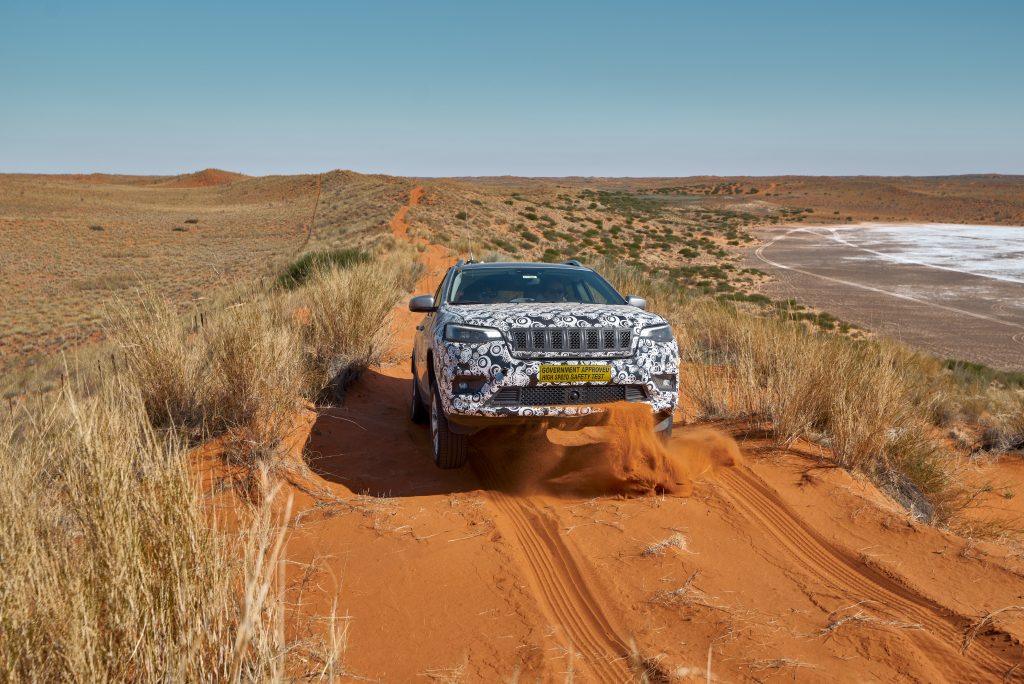CARS UNDERGO EXTREME HEAT TESTING IN SOUTH AFRICA
#extreme #cars #vehicle #heat #testing #southafrica

The second episode of FCA’s unique project which reveals the work carried out behind the scenes to reachthe high quality, safety, reliability and comfort standards of each model is on air.After the success of the trailer and the first episode, #fca What’s Behind lands in South Africa for hot temperature tests.
The first episode of #fca What’s Behind showed the tests carried out on cars in the polar temperatures of Arjeplog. For the second episode, we are travelling some 15,000 kilometres south to #Upington, in the Northern Cape province of South Africa, on the border with Botswana and Namibia, for tests in torrid heat conditions. Founded in 1884, the town is named after colonizer Thomas Upington and is located on the banks of the Orange river at 835 meters a.s.l. It is also the main access point to the Kalahari park, one of the most important in the country and situated at the border with Botswana.
Although most of the tests are carried out in southern Europe and in #Sicily, Upington was chosen because the development plan of a car is not always coherent with seasons in the northern hemisphere and because the town on the banks of the Orange river has the ideal conditions for testing vehicles in torrid heat. Upington is one of the hottest towns in South Africa and the ideal place to assess borderline or worst-case scenarios and to strike the right trade-off between hot temperature performance as a whole against speed, elevation and heat.
Why test cars in torrid heat?
Each car must reach the production stage able to withstand all weather conditions. Specifically, the hot climate all year round means that all turning tests can be performed repeatedly, for instance on the engine, specifically focusing on cooling and driveability, on the A/C system, to verify its ability to maintain climatic comfort, on material performance and on vehicle system reaction times.
Behind the scenes of the #fca tests in Upington
Unlike the proving ground of Arjeplog, there are no test facilities in Upington. The tests are performed in locations which reproduce the characteristics necessary to assess specific aspects or performance trade-offs influenced by environmental features.

The vehicles are sent from Turin already equipped with the instruments needed for the tests and in addition to driving the technicians present in South Africa are also called to analyse the data collected during specific tests and transfers. All vehicle systems are monitored and any abnormal or unexpected behaviours are diagnosed to find a solution. The stream from Turin is continuous. The test team focuses on about twelve vehicles per session during which about twenty technicians are employed.
Why South Africa?
The environment of South Africa is ideal for car development tests. The main advantage is the easy availability of fuels with characteristics compatible with European ones, unlike Brazil, for instance, where the availability of petrol is not always guaranteed and dedicated logistics must be set up as a consequence. Cars of many different types, some totally or partially disguised, with license plates of different nationalities, can be seen in Upington. Common to all cars is the special plate authorising to travel along a 55-kilometre road where local speed limits can be broken and the cars can be driving to speeds in excess of 200 km/h. Interesting fact: carrying out the test in a place surrounded by large swathes of unspoilt nature, on roads far away from cities, means the possibility of encountering in exotic local fauna. While in Europe encountering a herd of cows on an Alpine pasture is normal, particularly during tests on mountain roads, in South Africa zebras are more typically found than cattle.

images and video fca media












